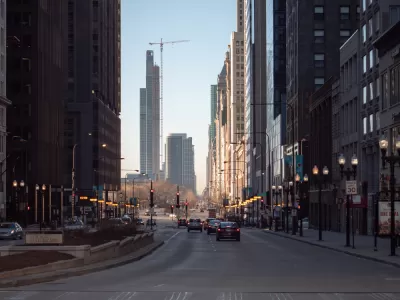If you thought residential buildings had reached their maximum potential for livable height, just wait a few years.

"Advances in concrete, elevators, and engineering have created a new breed of buildings," according to an article by James Tarmy.
These new supertall residential towers continue to grow, both in size and controversy, as new products come online, taller than the preceding generation. According to Tarmy, residents of these buildings might be in a for a few surprises, like in the example that opens the article, 432 Park in New York City.
At 432 Park, chandeliers often sway with the building, and creaking sounds can be heard on gusty nights. Elevators have been shut down in high wind because their cables were shaking too much to be safe. Right before Labor Day, the entire building had to clear out for about two days during extensive repairs to the building’s electrical systems. It’s hardly what residents thought they’d be getting for their $20 million-plus investments.
While the swaying is to be expected and buildings like 432 Park are subject to city, state, and international standards, each generation of supertall residential towers "is a proving ground for the next," writes Tarmy. This generation is abundant, in addition to being increasingly tall.
"From 1991 to 2001, an average of twelve 200-meter-plus structures went up around the world each year. From 2011 to 2021, the annual average was 112, according to a report by the Council on Tall Buildings & Urban Habitat," writes Tarmy. "The average height of the 100 tallest buildings in the world has increased 41% since 2001, from 284 meters to 399."
The article also provides details about some of the lessons contributing to the ever increasing height of residential supertall buildings—like what we've learned about wind vortices and construction materials.
FULL STORY: Luxury Supertowers Are Going Even Higher (Don’t Mind the Swaying!)

Study: Maui’s Plan to Convert Vacation Rentals to Long-Term Housing Could Cause Nearly $1 Billion Economic Loss
The plan would reduce visitor accommodation by 25,% resulting in 1,900 jobs lost.

North Texas Transit Leaders Tout Benefits of TOD for Growing Region
At a summit focused on transit-oriented development, policymakers discussed how North Texas’ expanded light rail system can serve as a tool for economic growth.

Using Old Oil and Gas Wells for Green Energy Storage
Penn State researchers have found that repurposing abandoned oil and gas wells for geothermal-assisted compressed-air energy storage can boost efficiency, reduce environmental risks, and support clean energy and job transitions.

Santa Barbara Could Build Housing on County Land
County supervisors moved forward a proposal to build workforce housing on two county-owned parcels.

San Mateo Formally Opposes Freeway Project
The city council will send a letter to Caltrans urging the agency to reconsider a plan to expand the 101 through the city of San Mateo.

A Bronx Community Fights to Have its Voice Heard
After organizing and giving input for decades, the community around the Kingsbridge Armory might actually see it redeveloped — and they want to continue to have a say in how it goes.
Urban Design for Planners 1: Software Tools
This six-course series explores essential urban design concepts using open source software and equips planners with the tools they need to participate fully in the urban design process.
Planning for Universal Design
Learn the tools for implementing Universal Design in planning regulations.
Ascent Environmental
Borough of Carlisle
Institute for Housing and Urban Development Studies (IHS)
City of Grandview
Harvard GSD Executive Education
Toledo-Lucas County Plan Commissions
Salt Lake City
NYU Wagner Graduate School of Public Service




























